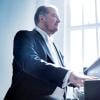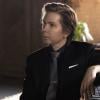
Viewed through the prism of a program he will perform Aug. 25 at the San Francisco International Piano Festival, pianist Parker Van Ostrand is ready for any challenge. That ambitious solo recital includes a Haydn sonata, Frédéric Chopin’s Ballade No. 1 in G Minor, Op. 23; Claude Debussy’s “Brouillards” from Préludes, Book II; Maurice Ravel’s La valse; and Franz Liszt’s Sonata in B Minor.
How does a young pianist work up all that repertoire? The answer is partly connected to his teachers. At the San Francisco Conservatory of Music (SFCM), Van Ostrand is being mentored by Garrick Ohlsson. Undergirding their relationship are interactions that support individual liberty and an approach that might be called “push, not pull,” or “question, then conquer.”
Ohlsson established himself early on, entering The Juilliard School at age 13, winning the 1970 International Chopin Piano Competition, and quickly building a career as a leading interpreter of not only Chopin but Mozart, Beethoven, and Schubert. He has taught at SFCM since 2018 and prior to that limited his teaching to master classes. He says he has the bandwidth for only three students but “gives very long lessons.”
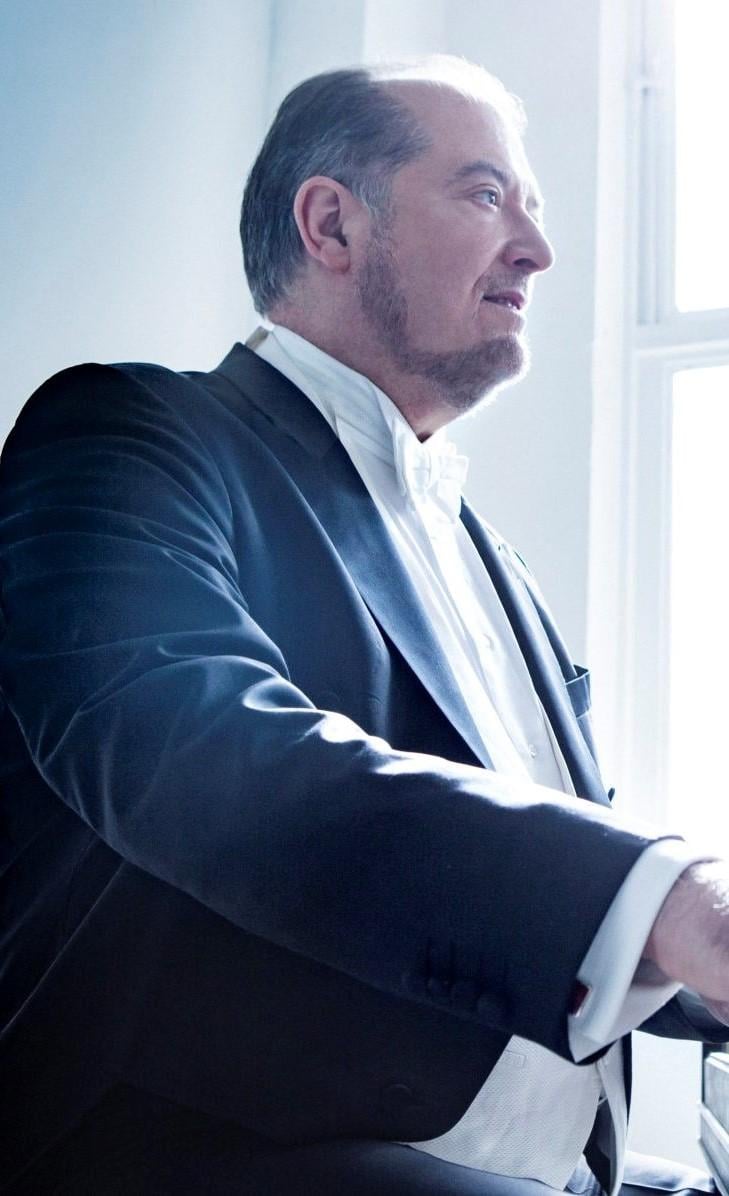
Ohlsson praises Van Ostrand’s early teachers for doing a “magnificent job” and suggests that his work as a mentor is largely to avoid undoing the marvelous results. “I find that teaching and giving the best I can in terms of musical culture, piano-playing advice, and even remedial stuff is critical in the same way it’s always been,” Ohlsson says. “You always need a good teacher. You don’t need a star or a famous [performing] musician to develop.”
Van Ostrand was born in 2003 and grew up in Sacramento while studying with Linda Nakagawa, Natsuki Fukasawa, Sarah Chan, and Jon Nakamatsu. The 20-year-old has continued to move rapidly to the forefront while studying with Ohlsson and Yoshikazu Nagai at SFCM. Van Ostrand has several recent competitions wins under his belt, including the 2023 PianoTexas Academy Concerto Competition, and was named a 2021 U.S. Presidential Scholar in the Arts. Next season, he will continue to perform with orchestras and give recitals across the country.
“Parker has a remarkable set of natural advantages,” Ohlsson says. “He has large hands, so he can play Liszt, Rachmaninoff, and Prokofiev without any particular worry. He’s not limited in the repertoire he can play. You don’t need large hands, but you do need a certain size and ability. He’s also a superb athlete, with the natural nervous system and physical coordination that is the result of genetics but also comes from having been well cultivated by his first teacher. The quality is ingrained. There are no blockages in the mind-body nerve connections between his muscles and hands and his emotions. It’s integrated in a way that’s extraordinary. He quickly grasps new music and the physical, emotional, and spiritual components of [that] music. He has worries, like all humans do, but he’s superbly gifted and superbly developed. Teaching a brilliant student like Parker is not easier than teaching a less talented student. The main thing I have to do with Parker is not to undo a beautiful structure [while] bringing in things about the music I want him to learn.”
For his part, Van Ostrand describes his work with Ohlsson in terms of expert guidance. “The biggest thing is that artistry is up to the individual performer. I have the freedom to play and make the choices I want. You can’t imitate another pianist; you have to do what makes sense to you and what you feel about a piece. He [Ohlsson] gives me feedback, and honestly, it’s like we’re working together to find new things all the time.”
Van Ostrand says he has learned valuable lessons from Ohlsson through close observation and mirrored physical modeling. “What I admire most about his playing is the way he makes it look effortless, but it doesn’t sound that way. Which causes me to think, ‘How do I play these difficult pieces in a way that’s natural?’ A lot of it is how he releases the sound. Once you play a note, sound is released, and there is nothing more you can do. Once you’ve tapped a key, no matter how much you push into the piano, there’s nothing more you can get out of that sound. How do you simplify things for the hand, using gravity and [certain] techniques, so you’re not stuck using force to go horizontally but instead utilize the space above it to move [your hands] around the piano? I can see how to do it watching him play.”
Jeffrey LaDeur, the founder and artistic director of the SF International Piano Festival, had this specific mentoring relationship in mind when he decided to focus the 2023 edition of the festival on the transmission of the Romantic tradition. Liszt, the inventor of the master class, among other things, was much on LaDeur’s mind when thinking about mentorship.
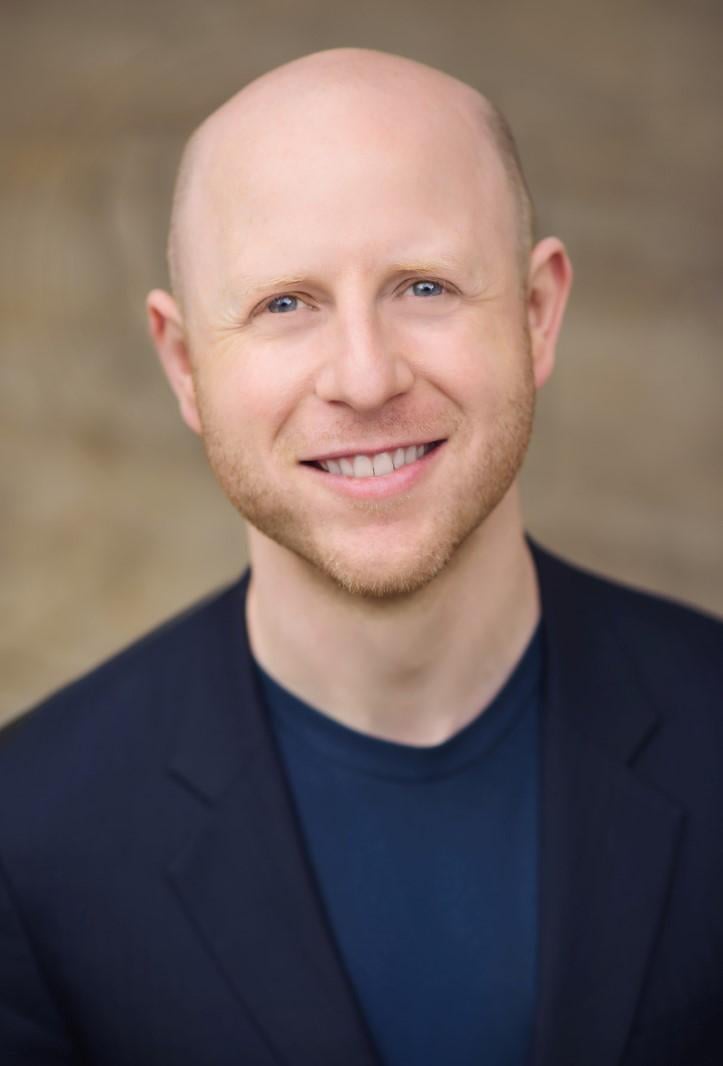
“He had a holistic, integrated view of one’s development as a pianist, musician, artist, and human being,” LaDeur says of Liszt. The festival’s free McKee Masterclass Series (which will feature Ohlsson on Aug. 24), is part of the tradition of nurturing the whole artist.
Van Ostrand says he is pushing himself with this program and seeks the sense of accomplishment that will come from performing all of these big pieces in one evening. He and Ohlsson describe how they work together to integrate the music and the musician.
Ohlsson says he is pleased with his student’s approach to Haydn’s Piano Sonata in E-Flat Major, Hob. XVI/52. “Parker has a natural grasp of the Viennese classics. The rhythm and dynamics of the work he understands. It’s a virtuosic sonata, which plays to his natural advantages, such as brilliant fingering and exquisite control. We’ve had to work on how you maximize the individual events without making it just a series of individual events brilliantly realized. I encourage him to enlarge his framework.”
In Van Ostrand’s view, “the biggest thing is the score I’m using is very sparse. The work for me comes from finding ways to make it interesting beyond what’s presented in the music. It’s articulation, pedaling, phrasing. If you see a big group of eighth notes, you want to make it sound orchestral, grand, majestic. I want to make parts of it sound like a string quartet, so I think of bowing and how a string player might do it. I think of things beyond what you can do on a piano. It’s less dense. You can do more with fewer notes. There are long passages that are easy to make sound like an etude, so it’s important to shape and find contour for all of the phrasing.”
Of the Chopin ballade, Van Ostrand says, “It’s one of Chopin’s most famous, so immediately, the hard thing is making a distinctive, personal interpretation. There’s room for doing unconventional things but still to be in the boundaries of what Chopin wanted. It’s in the phrasing. Just in the opening line, there are expressive points: Where is the climax? What is the character? Some parts are more dramatic, some more restrained. The coda can be wild, panicked, and out of control or instead have an insistent feel that’s relentless. And then there’s cohesion with all the changes throughout and [the question of] how you make it sound like one story or narrative that goes from the first note to the last. I came up with my own story and summarize it as a really messy breakup between two people. How do I make that come alive?”
Ohlsson says his student learned the piece “last year, all by himself. Parker is a natural Chopinist. You need both a classical and a romantic element. Without [the romantic], Chopin is as dull as dishwater, but if it’s all magic and moonlight, it’s nauseating. I’ve had to stretch him in terms of individual rubatos, how to originate them in local and longer ranges. There is also the subtle blending of pedaling during harmonies, a staccato, or a rest somewhere. … How do you do that? Is it sonorous? He [Van Ostrand] grew up as a young artist in the vortex of ‘What is the correct edition? Is that the correct text?’ I didn’t grow up with that idea of the urtext and doing only what is written. With Parker and many young pianists, they wonder if it’s OK to do X, Y, or Z. I say the great artists we love and treasure are not, mostly, giving you only the urtext and nothing else.”
And then there’s Ravel’s own transcription of La valse. “You have to start playing as if you don’t know where it ends,” Van Ostrand opines. “If you have the end goal in mind when you begin, the hardest thing is to convey the complete life cycle of the waltz.
Van Ostrand continues, “In the beginning it’s more hesitant as the dance form is created, and there’s mystery. Then, there are glimpses of it as the mist clears. It’s sensual, nostalgic, like going between different rooms and interactions, and then the waltz spirals out of control. It’s essentially destroyed by the end, which is a commentary on the First World War. It’s a piece of despair, and the waltz represents an art form that no longer exists and never will because of what [had] happened in Europe. How do you make it to the end and through the apocalyptic finale? At one point, I’m doing glissando on the white keys and the black keys; it’s like a chandelier crashing. There’s a two-page accelerando, and how do you pace that and save up [energy] so you can have the explosion? You have to be a pianist and a conductor at the same time.”
About La valse, Ohlsson relates, “He [Van Ostrand] heard me play it last year and got turned on to the piece. The first lesson he came in and I thought he was ready for Carnegie Hall. I didn’t do much. I just tried to suggest things where he could follow his natural instincts and enlarge them, kick it up a notch.”
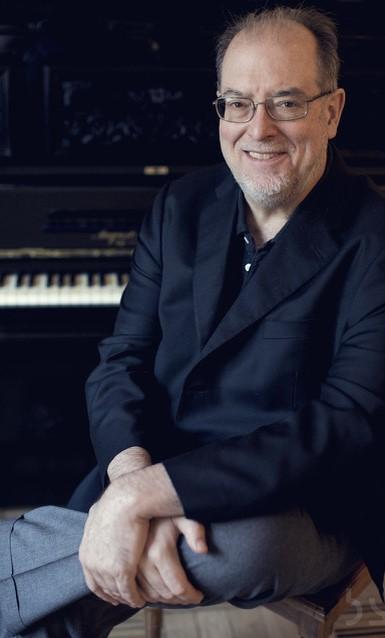
After hearing Van Ostrand play Liszt’s Harmonies du soir, LaDeur decided to establish a fellowship through the SF International Piano Festival and the American Liszt Society. Van Ostrand’s recital inaugurates this fellowship, and so the presence of the composer’s B-Minor Sonata on the program is serendipitous.
“We’ve worked on that a lot,” Ohlsson says about the sonata. “When he [Van Ostrand] brings in a piece, there’s still a lot of life experience to be learned. It was natural for him in terms of tonality, but his interpretation was too modest, classical, obedient. I can’t say, ‘Be messy, wild, and crazy.’ I say, ‘You take your interpretation and liberate that, exaggerate the rhetoric, play to make people feel the thrill of the drama. You have to italicize things, make them more spectacular, especially with pacing.’ The other day we had a Zoom lesson and spent two hours on lost details after having put it away for a while. Music grows and inhabits us. Now he is ready to be pushed into areas he may not even like. I tell students to exaggerate and give it a try. Once you know that point, you can always refine it down. If you start prim, it’s harder to make it more expressive.”
Van Ostrand seems to echo his teacher, saying about the sonata, “It’s the most amazing example of thematic transformation. Everything is based on four motifs [that Liszt] presents in the first few minutes. What he does is incredible. He not only transforms themes into different keys; he turns something like the sound of a devil laughing into a love theme. Besides it being technically difficult, the difficulty is maintaining that struggle during 30 minutes without letting go of the tension.
“What’s hard for me is the emotional investment. It ends ambiguously. There’s pleading, begging, praying, conveying desperation, and as I play it, it’s emotionally exhausting more than physically. You have to leave everything on the stage. What helps most is getting performance experience because of the energy you need. I played it last year and then put it away for about a year. Bringing it back about a month ago, I discovered that creating the most impact on the audience meant frightening them at moments and also having transcendent, religious qualities. Now that it’s more internalized, I’m able to go to more extremes, to give more because I’m more confident. I have a bigger vision and can let go.”


